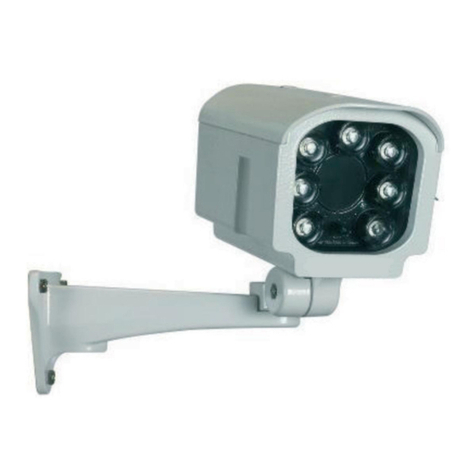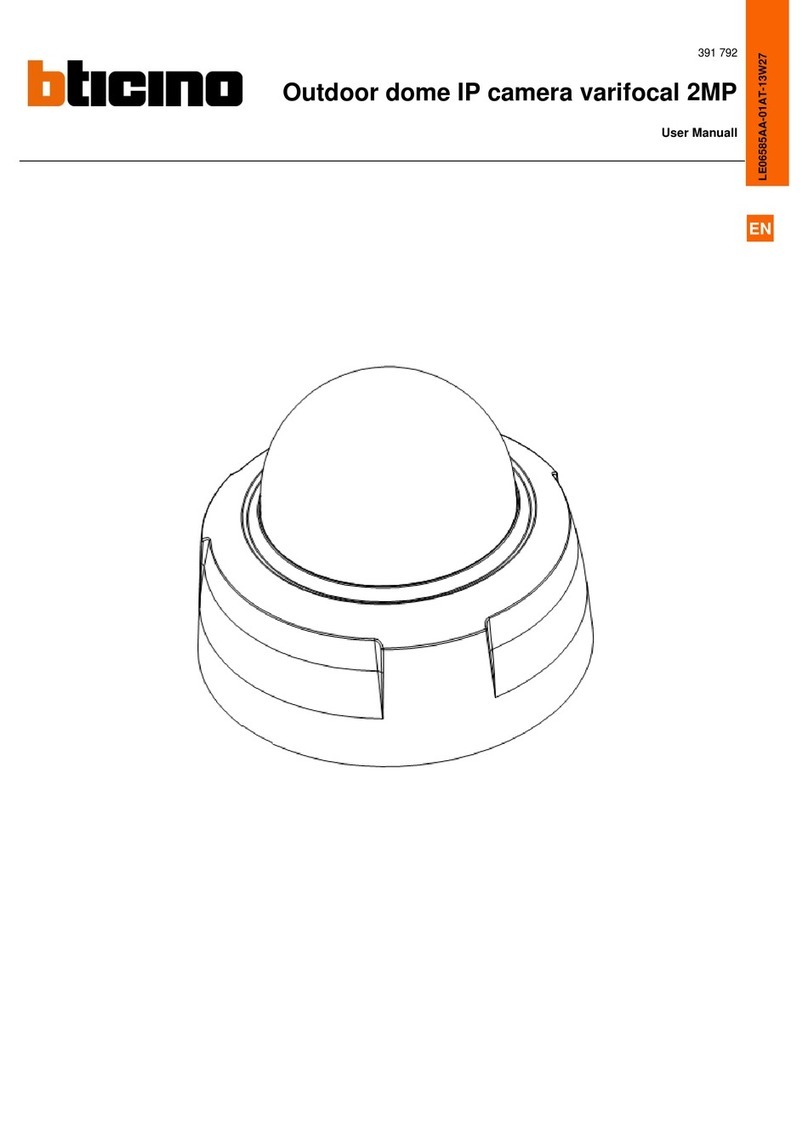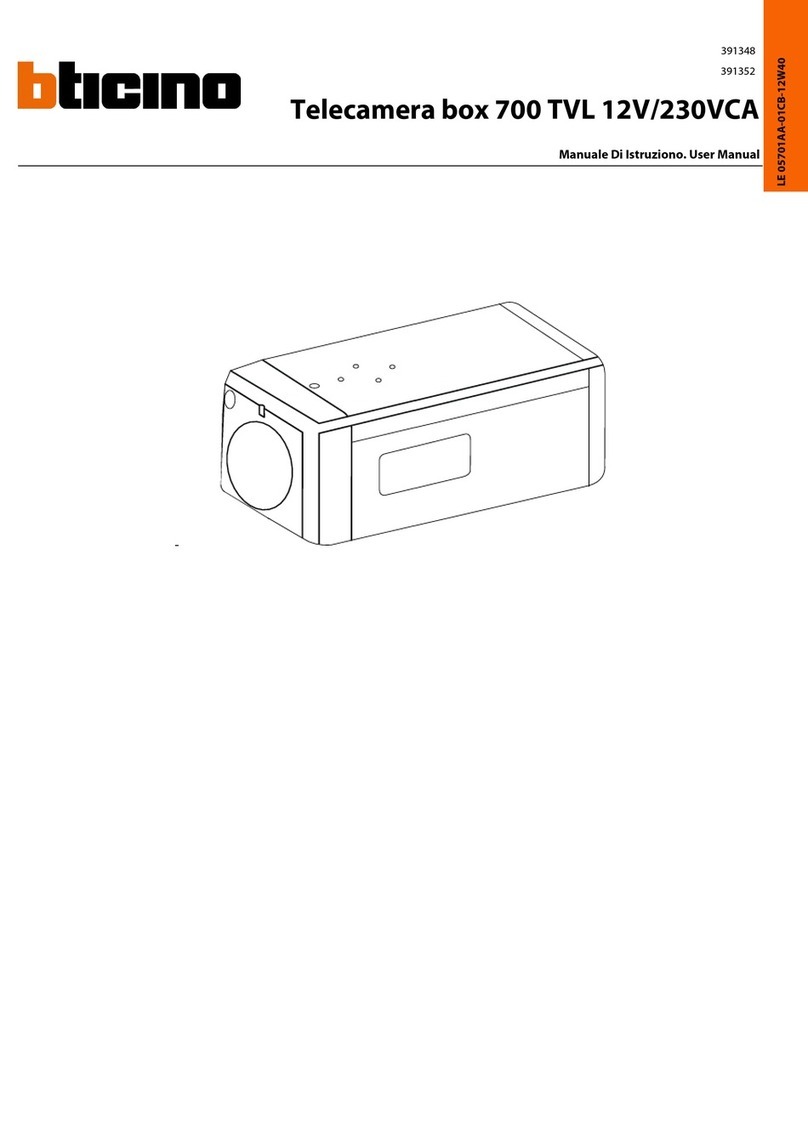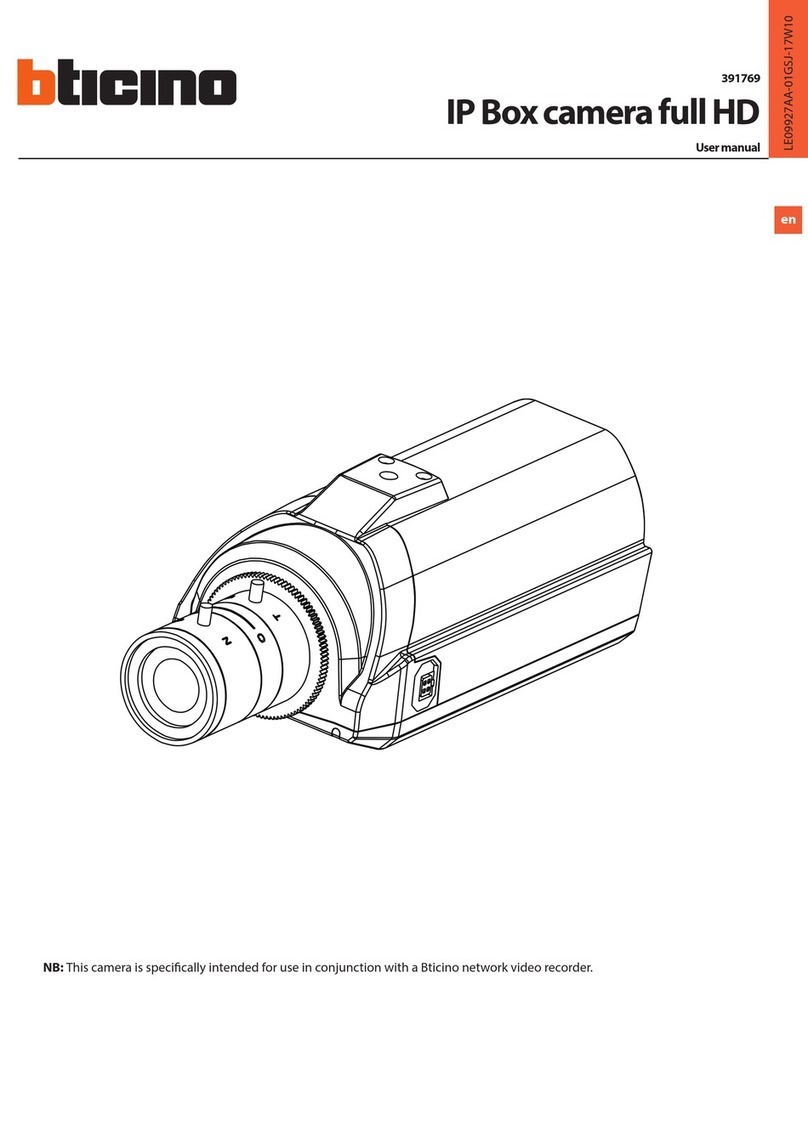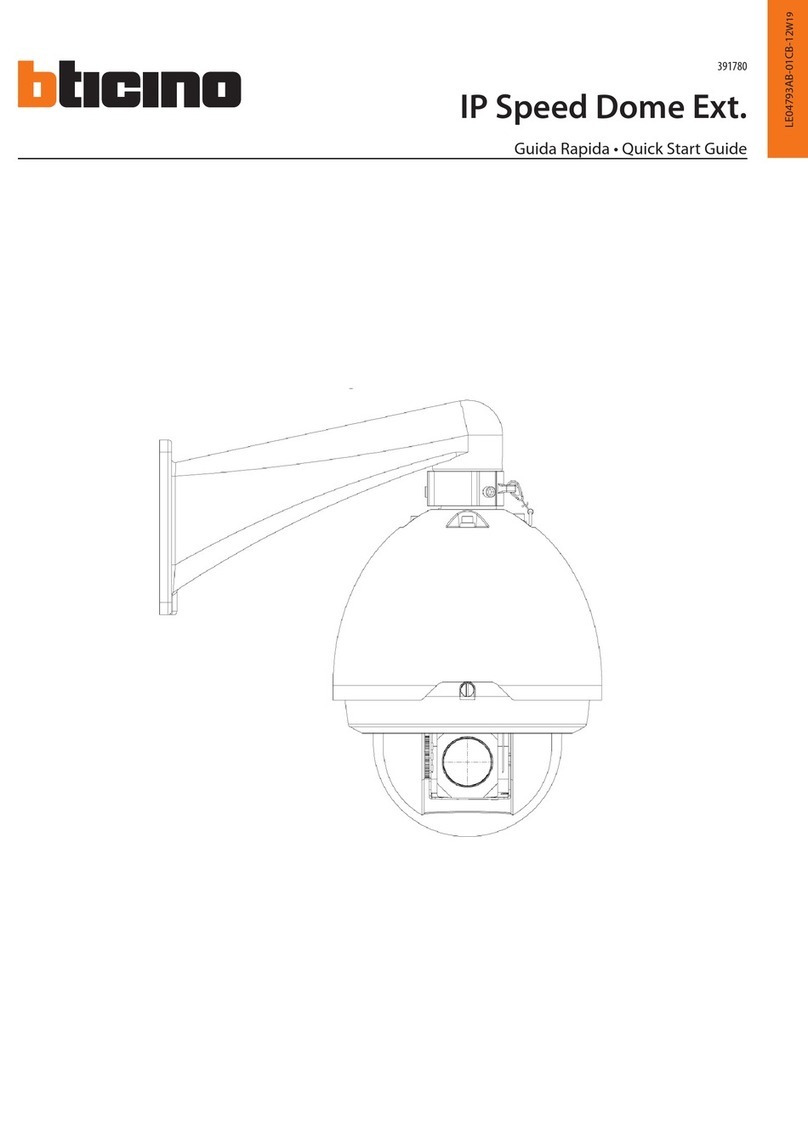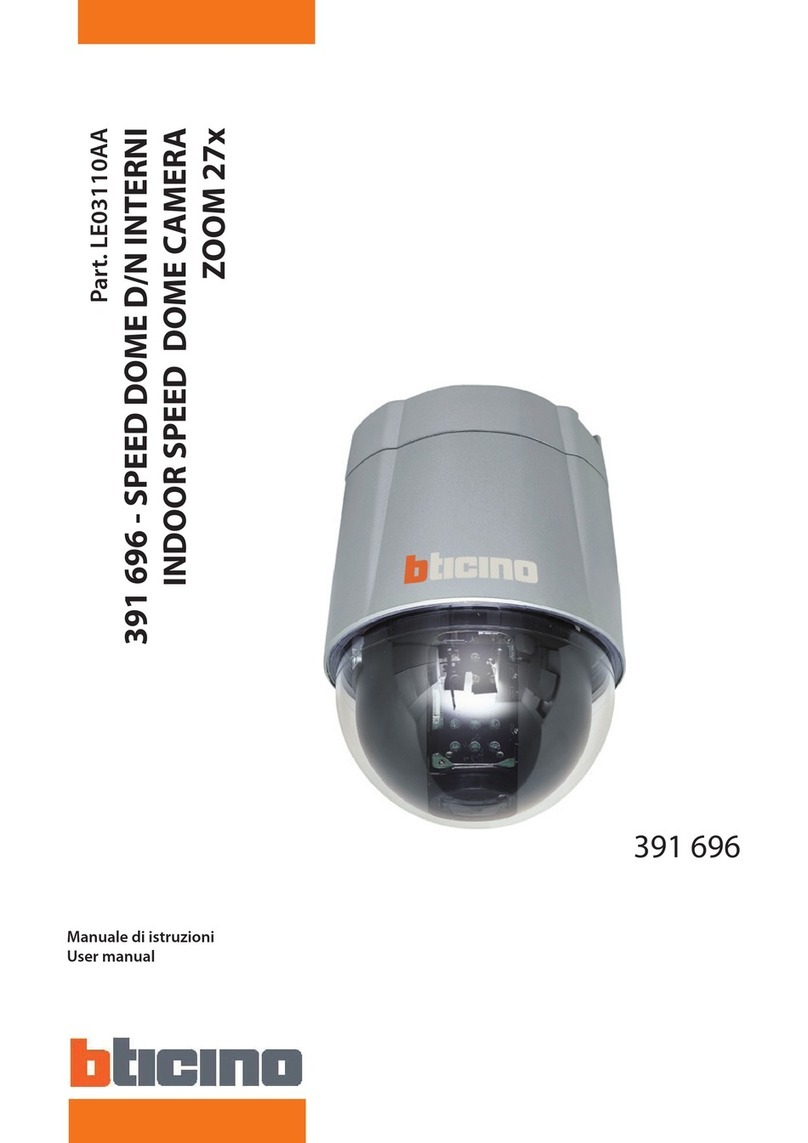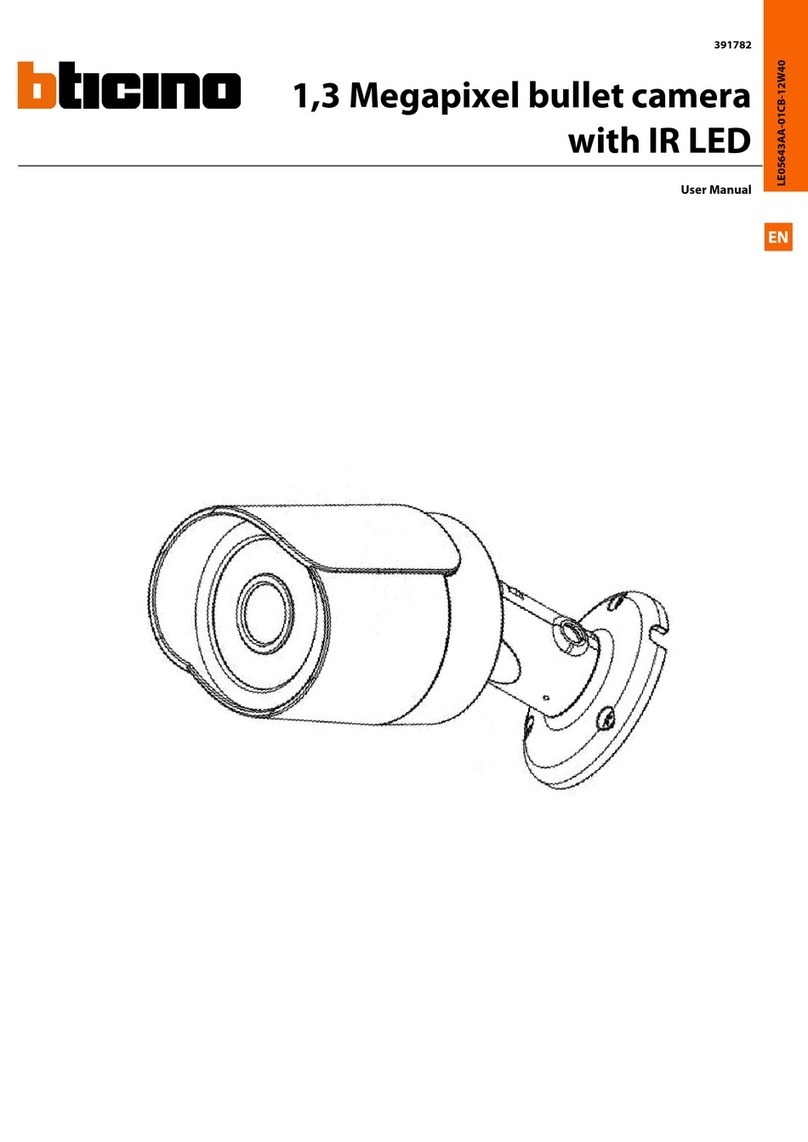Description
Télécaméra monochromatique CC 1/3”
Alimenter la télécaméra sous une tension de 230V c.a. 50Hz.
Régler la mise au point de l’objectif et le diaphragme (au cas où
l’on utilise des objectifs à diaphragme manuel) pour optimiser
l’image.
Objectifs
Utiliser des objectifs à raccord CS. Il est possible d’utiliser
aussi des optiques avec pas C par l’intermédiaire d’adaptateur
Caractéristiques
Alimentation 230Va.c. +/- 10% / 50 +/- 1 Hz
Absorption 100 mA
Capteur 1/3” noir et blanc CCD
à transfert d’interligne.
Eléments de l’image Totaux : EIA 537(H) x 505 (V)
CCIR 537(H) x 597 (V)
Effectifs : EIA 510(H) x 492 (V)
CCIR 500(H) x 582 (V)
Système de balayage
standard EIA 525 lignes, 30 frames/sec.
standard CCIR 625 lignes, 25 frames/sec.
Système de synchronisation
Interne
Résolution 420 lignes TV
Eclairage minimal 0.15 Lux / F1.2
Gamma 0.45
Rapport signal/bruit 46 db (AGC OFF)
Obturateur électronique EIA (1/60 – 1/100000)
CCIR (1/50 – 1/100000)
Diaphragme automatique Connecteur 4p (DC – VIDEO)
Signal de sortie 1,0 Vpp composite – 75 ohm
Température d’exercice - 10°C +50°C
Encombrement (mm) 50 (l) x 50 (h) x 130 (p)
Poids 560g
Avertissements
- Ne pas orienter la télécaméra vers le soleil.
- Ne pas diriger la télécaméra vers le soleil, même si elle n’est
pas en cours de prise.
- Ne pas filmer en présence de lumière excessivement forte.
- Ne pas laisser tomber la télécaméra ou lui donner de coups
ou la soumettre à vibrations.
- Ne pas toucher aux parties internes.
- Installer la télécaméra en un endroit où elle ne puisse pas se
mouiller. Au cas où elle se mouille, couper immédiatement
l’alimentation et contacter le service après-vente.
- Installer la télécaméra loin de sources d’interférence vidéo.
Lorsqu’on pose les câbles de la télécaméra à proximité de
conducteurs électriques ou d’antennes pour appareils de télévi-
sion, des troubles de l’image peuvent se manifester. Si cela se
produisait, repositionner les câbles ou réinstaller l’appareil.
- Contrôler la température ambiante et l’humidité.
La qualité de l’image peut être détériorée ou certaines parties à
l’intérieur de la télécaméra peuvent être sujettes à des pannes, si
la température ambiante est supérieure ou inférieure à celle indi-
quée dans les caractéristiques. Il est opportun d’éviter d’utiliser
la télécaméra dans ces cas-là. Il convient de prendre des précau-
tions également en présence d’un degré d’humidité élevé.
Dénomination des pièces et fonctions
1 - Raccord des objectifs: raccord CS
2 - Vis de fixation télécaméra: en apparent, sous boîtier, etc.
3 - Terminal IRIS: à brancher au cas où l’on utilise un objectif à
diaphragme automatique.
4 - Connecteur pour sortie vidéo (BNC)
5 - Câble d’alimentation: à brancher sur le réseau 230V c.a.
50Hz
6 - Interrupteur obturateur: pour mettre en action la modalité
(obturateur électronique automatique); avec des objectifs à
diaphragme manuel, positionner sur ON.
Positionner sur SH dans le cas où l’on utilise des objectifs à
diaphragme automatique.
7 - Interrupteur AUTO IRIS: positionner sur VIDEO pour des
objectifs avec amplificateur; positionner sur DC pour des
objectifs sans amplificateur.
8 - LED indicateur présence alimentation
9 - Potentiomètre DC VR pour régler le niveau de la sortie vidéo,
si l’on utilise des objectifs avec IRIS automatique.
opportun (livré en dotation). Si l’on utilise des optiques avec
diaphragme automatique, raccorder le connecteur de l’objectif
au terminal IRIS à l’arrière de la télécaméra.
Remarque: Si l’on utilise des objectifs avec zoom motorisé dans
le boîtier pour extérieur réf. 391803, il faut fixer à l’étrier interne
de support, en plus de l’objectif, également la télécaméra à l’aide
de l’entretoise fournie, en le vissant au corps de la télécaméra.
La télécaméra est livrée en position de back focus standard.
Cependant, pour certains objectifs avec zoom, un réglage peut
s’avérer nécessaire.

